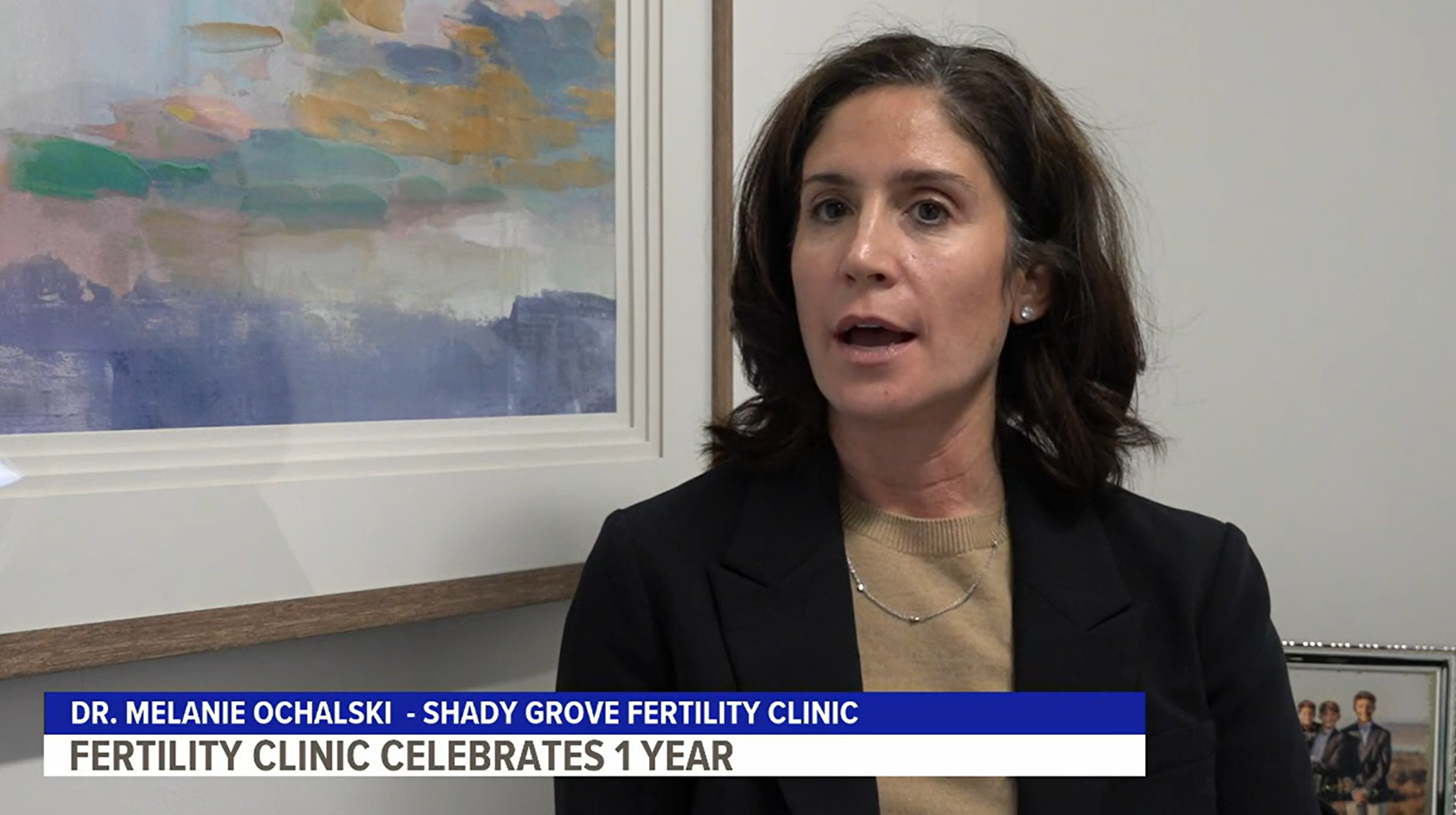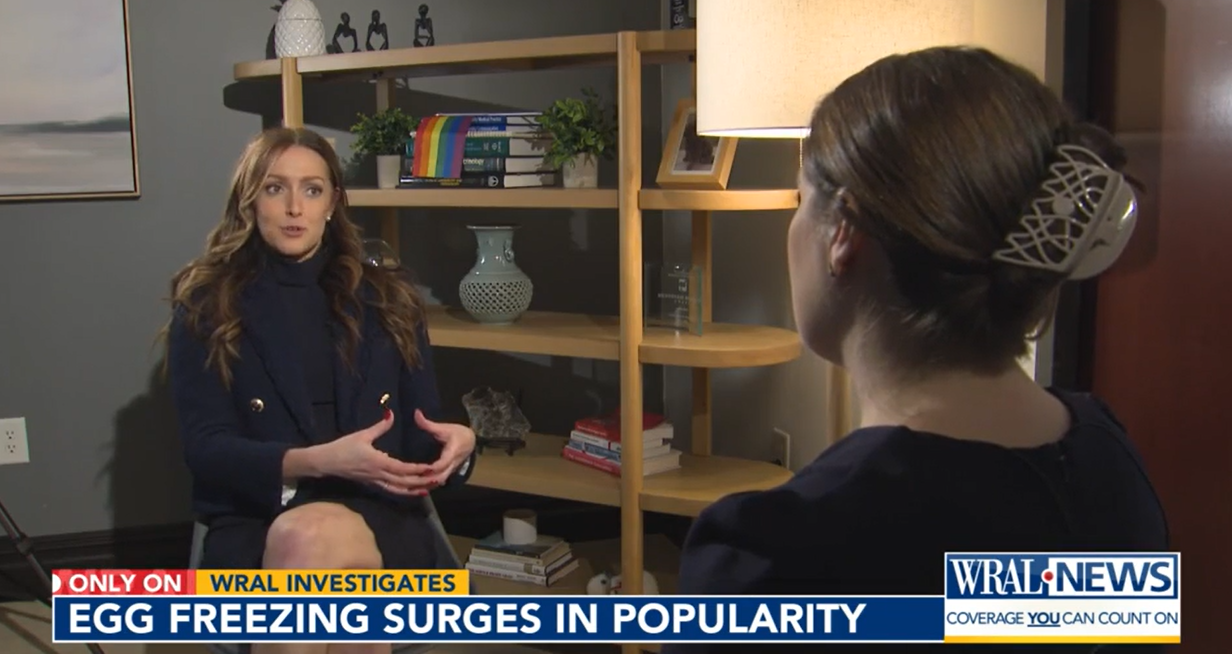Leslie Stagnato and her husband have been trying to have a baby for five long years. They’ve already been through several IUI’s, loads of oral and injectable medication, and even a few IVF’s. She’s actually conceived three times, but all were lost within the earliest weeks of pregnancy.
Leslie is only 28 years old.
For the past few years, stories abound in the media about how fertility experts can help older women conceive. While anecdotes about younger women are out there, they nearly always end (in the public eye, that is) with relatively quick resolutions of only a few steps from diagnosis to baby.
Surprisingly perhaps, Leslie doesn’t consider her situation a failure. “I know that I didn’t cause my infertility,” she explains, “and my husband has the same attitude. There are no guarantees in life, and I wouldn’t change what I’ve gone through at all.” She says her experience with not only infertility but also unsuccessful treatments and miscarriage has given her pause to consider how often most of us take things for granted. “The last few years and this experience have made me who I am,” says Leslie, who is now eager to talk with others at every opportunity.
An Early Learner
Leslie knew something was wrong as early as her teen years. “I was so irregular, I once went 18 months without a period when I was 18 years old.” That prompted her first gynecological exam where she was told she “probably had PCOS [polycystic ovarian syndrome – a common ovulatory disorder], and that it was no big deal.” She was prescribed birth control pills and told that should take care of the situation.
The subject of fertility came up when she and her now-husband started talking about marrying and having children. Leslie had a vague sense of worry. So the couple used no contraceptives for a couple of years, but by the time she was 25, having done her own research through books and the Internet, Leslie knew it was time to see a specialist.
First, she spoke to her OB/Gyn about some of the typical PCOS symptoms she was having – excessive hair growth, acne, and feeling overly emotional. She was then formally diagnosed with the syndrome and her husband’s semen analysis came back abnormal with poor morphology. Her physician immediately referred the couple to Shady Grove Fertility where she became a patient of Dr. Stephen Greenhouse.
A Persevering Patient
For the past 30 months as of this writing, Leslie and her husband have tried virtually all of the best forms of assisted reproductive technology. They have done so with studied deliberation and cautious pursuit. The young realtor can discuss her series of treatments with the vocabulary of a medical professional. She’s done her homework, most of it online and often through the several Internet gathering places for others struggling through infertility treatment.
“The first time I conceived with IVF, I felt spurred on even though sad about the loss,” Leslie recalls, “but I nearly gave up after the second miscarriage.” Her husband boosted her morale, saying it wasn’t time yet to quit. “But I don’t recommend back-to-back cycles – it’s just too hard.”
Such tenacity and follow-through is expensive. Besides becoming a para-expert in the treatments she was undergoing, Leslie and her husband remained level-headed about the financial part of their journey. She’d been in and out of debt before and refused to go there again. In addition to savings, the couple took out a home equity loan to help pay for treatments beyond the IUI’s, which were covered by insurance. When they learned how the Shady Grove Fertility Shared Risk Refund program works, they eagerly applied and were accepted.
“If we weren’t able to be in the Shared Risk program,” Leslie says, “there’s no way we could’ve afforded IVF, and certainly not all that we have by now. And we really liked the idea of having money left for adoption if the treatments didn’t work. Even if we can’t have a biological child in the end, at least Shady Grove made it possible for us to have a child through adoption.”
A Philosophical Mother-To-Be
“Devastation doesn’t even describe how I felt about the miscarriages,” Leslie reveals, “and I feel so bad that when I learned I was pregnant the third time, I didn’t feel the same joy as before.”
She and her husband have decided to give one more IVF with ICSI/PGD a try. “2007 was a really rough year for us, and I’ve spent too many times crying over our losses. We’ve come to the point where we’ll do this one last one – with some measured changes to the protocol – and then head for adoption if no baby results.”
Rather than continue on in the same treatment pattern, her medical team, which includes nurse Linda Bergman, will be following the same protocol with this cycle as they did with her most “successful” prior one, in which 18 embryos resulted. Additionally, she’s been on a high-dose folic acid regimen in hopes of counteracting a possible MTHFR mutation, a genetic situation that could cause miscarriage.
“Protocols aren’t set in stone and can change,” the experienced patient advises. “In my case, my doctor and nurse listen to me. I tell new patients to trust your doctor, but bring up anything that worries you or that you disagree with – and do whatever you can not to stress.”
Until recently, Leslie’s pain was her focus. Now, she feels ready to share her experience, “because you never know if someone else is silently going through all of this and feeling alone. Even though I haven’t had the success we all are hoping for, I know that even if that doesn’t happen, I’ve had the very best medical team helping me get there. I used to dwell on the losses, but I’ve realized now that it’s all about persevering and having a baby. We will be parents, someday.”
Story Update
If ever there was a happy ending, Leslie Stagnato has one to tell.
Their one last IVF cycle resulted in the birth of Alexander in October 2008.
She remembers those first anxious weeks of pregnancy. “Very early on, there were actually three sacs with two heartbeats, so we were preparing for multiples, but by the 8th week, we were down to one: Alexander.”
“The pregnancy was great,” she reports. And as a testament to the value of perspective, she went on to describe the weeks of bedrest and pelvic rest prescribed due to bleeding from her pregnancy’s 9th through the 28th weeks. After going through the prior losses she and her husband endured, Leslie still describes it as “a very uneventful pregnancy.” She was able to deliver naturally and without pain medication, as she’d always dreamed.
And even more is in store for the Stagnato’s: just last week, Leslie learned she’s pregnant again, this time via the “old fashioned way”. She believes it may have something to do with the 60 pounds she lost, since she started ovulating regularly once that weight was gone.
“We weren’t trying, but we weren’t actively avoiding it either,” she laughs. After their initial “disbelief and shock,” the couple is “cautiously excited” about another baby.





